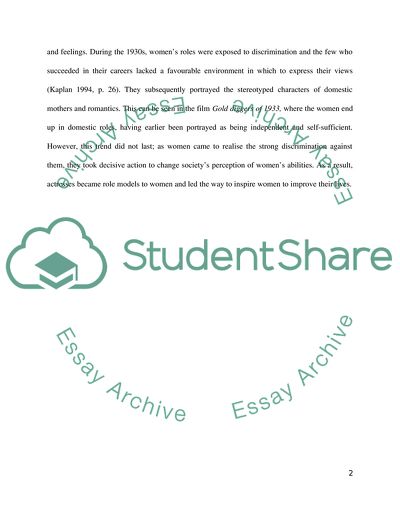Cite this document
(“Criticisms of Womens Roles in 1930s Film Research Paper - 5”, n.d.)
Retrieved from https://studentshare.org/visual-arts-film-studies/1603374-this-research-can-focus-on-any-historical-topic-related-to-the-coursethat-is-on-any-topic-covered-in-class-or-in-your-dossier-readings
Retrieved from https://studentshare.org/visual-arts-film-studies/1603374-this-research-can-focus-on-any-historical-topic-related-to-the-coursethat-is-on-any-topic-covered-in-class-or-in-your-dossier-readings
(Criticisms of Womens Roles in 1930s Film Research Paper - 5)
https://studentshare.org/visual-arts-film-studies/1603374-this-research-can-focus-on-any-historical-topic-related-to-the-coursethat-is-on-any-topic-covered-in-class-or-in-your-dossier-readings.
https://studentshare.org/visual-arts-film-studies/1603374-this-research-can-focus-on-any-historical-topic-related-to-the-coursethat-is-on-any-topic-covered-in-class-or-in-your-dossier-readings.
“Criticisms of Womens Roles in 1930s Film Research Paper - 5”, n.d. https://studentshare.org/visual-arts-film-studies/1603374-this-research-can-focus-on-any-historical-topic-related-to-the-coursethat-is-on-any-topic-covered-in-class-or-in-your-dossier-readings.


